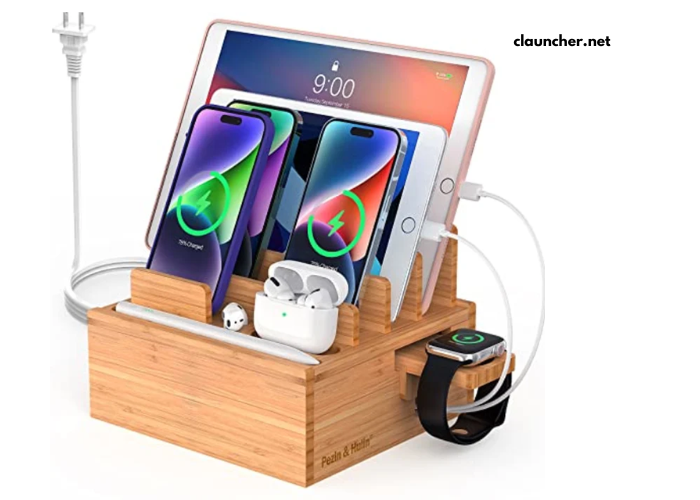
In recent years, technology has advanced at an exponential rate, and every year brings forth innovative gadgets that promise to change the way we live. As we look ahead to 2025, a new wave of tech gadgets is set to revolutionize various aspects of our personal and professional lives. From artificial intelligence to cutting-edge wearables, these gadgets are designed to make our daily routines more efficient, enjoyable, and convenient. In this article, we explore some of the most exciting tech gadgets that will change your life in 2025.
1. AI-Powered Smart Glasses: A New Way to See the World
What Are AI-Powered Smart Glasses?
AI-powered smart glasses are set to be one of the most groundbreaking gadgets of 2025. These glasses integrate augmented reality (AR) with artificial intelligence (AI), allowing users to experience the world in a completely new way. Think of them as wearable computers that overlay digital information onto the physical world.
Features and Benefits
These smart glasses will enable real-time translation, navigation assistance, and contextual information on the go. For instance, when you’re traveling in a foreign country, the glasses could display translations of street signs or menus right in front of your eyes. In addition, smart glasses could give you hands-free access to notifications, emails, and calls, making multitasking easier than ever before.
Moreover, advancements in AI will make these glasses smarter, offering personalized recommendations based on your preferences, location, and interests. As a result, they will become an indispensable tool for professionals, travelers, and tech enthusiasts alike.
2. Smart Home Assistants 2.0: More Than Just Voice Commands
The Evolution of Smart Home Technology
While smart home assistants like Amazon Alexa and Google Assistant are already part of many households, the next generation of these devices will take things to a whole new level. In 2025, we can expect smart home assistants to become far more intuitive and capable, offering seamless integration with every aspect of your home.
Key Features
In 2025, smart home assistants will not only respond to voice commands but will also be able to understand complex gestures, predict your needs, and automate daily tasks. For example, these assistants will be able to anticipate when you’re about to arrive home and adjust the lighting, temperature, and even order groceries based on your previous preferences.
Additionally, with the integration of more advanced AI, these devices will be able to learn from your behavior and adjust their functionality accordingly. This means that your smart assistant will become more personalized, and your home will feel even more intuitive and responsive.
3. Foldable Phones: The Future of Portable Devices
The Rise of Foldable Phones
Foldable phones are expected to become more mainstream by 2025. These smartphones offer a new level of portability by allowing users to fold and unfold the device, providing a larger screen when needed and a compact form when on the go.
Advantages of Foldable Phones
Foldable phones will provide an ultra-portable solution for users who want the functionality of a tablet but the convenience of a smartphone. With advancements in flexible OLED displays, the screens will be more durable and capable of withstanding repeated folding without losing quality.
The larger, foldable screens will enhance productivity, enabling users to easily multitask, watch videos, and engage in video calls. For professionals and digital nomads, this innovation will provide the perfect balance between portability and functionality.
4. Wearable Health Tech: Revolutionizing Personal Health
The Rise of Health Monitoring Wearables
Wearable health technology is one of the most exciting areas of innovation in the tech world. In 2025, these gadgets will be more advanced than ever, allowing users to monitor their health and fitness levels in real time with greater accuracy and precision.
Key Features and Benefits
Wearable devices such as smartwatches and fitness trackers will be equipped with cutting-edge sensors that can monitor vital signs, including heart rate, blood pressure, oxygen levels, and even blood glucose. This data will be sent to your smartphone or cloud-based health platform, where it can be analyzed and used to provide personalized health recommendations.
Additionally, new wearables will incorporate features like stress level monitoring, sleep tracking, and even mental health support. These devices will not only help you stay physically fit but will also assist in managing your mental and emotional well-being, giving you a holistic view of your health.
5. Autonomous Vehicles: The Future of Transportation
How Autonomous Vehicles Will Change the Way We Travel
In 2025, autonomous vehicles are expected to become more widely available, fundamentally changing the way we travel. These self-driving cars will use a combination of AI, machine learning, and advanced sensors to navigate roads safely and efficiently without human intervention.
Features and Benefits
Autonomous vehicles will significantly reduce traffic accidents, as they are designed to follow traffic laws, monitor surrounding traffic, and respond to changes in the environment. With advanced algorithms and real-time data analysis, these vehicles will be able to predict potential hazards and take preventative measures.
For consumers, autonomous vehicles will make commuting and long-distance travel more convenient. These vehicles will free up time for passengers to work, relax, or engage in leisure activities, making transportation more productive and enjoyable.
6. Smart Clothing: The Future of Fashion Meets Technology
What Is Smart Clothing?
Smart clothing is a category of wearable technology that integrates electronics into fabrics, allowing garments to serve functional purposes beyond traditional fashion. By 2025, smart clothing will become more common, offering a range of innovative features that cater to both comfort and style.
Key Features of Smart Clothing
Smart clothing will feature sensors that track vital signs such as heart rate, body temperature, and muscle activity. For athletes and fitness enthusiasts, this technology will provide real-time feedback to optimize workouts and prevent injury. These garments will also have the potential to adjust to environmental conditions, such as regulating temperature or providing additional support during physical activity.
Beyond performance, smart clothing will incorporate advanced features like embedded LED lights, enabling clothing to change colors or patterns based on user input or environmental conditions. This fusion of fashion and technology will allow users to express their personal style in new and interactive ways.
7. AI-Powered Personal Assistants: Your 24/7 Digital Companion
What Is an AI-Powered Personal Assistant?
AI-powered personal assistants will evolve into more powerful tools by 2025. These digital assistants will leverage machine learning and natural language processing to provide highly personalized assistance in almost every aspect of your life, from managing your schedule to making decisions on your behalf.
Benefits of AI Personal Assistants
In 2025, AI-powered assistants will understand your preferences and routines better than ever. For example, they will schedule appointments, recommend content, order products, and even help you manage your finances based on your spending habits.
Moreover, these assistants will be capable of performing complex tasks, such as drafting emails, summarizing documents, and even handling customer service inquiries. With the increasing sophistication of these assistants, they will become indispensable productivity tools that help you streamline your daily life.
8. 3D Printers: Transforming Manufacturing and Creativity
The Future of 3D Printing
By 2025, 3D printing will become even more advanced, affordable, and accessible. This technology will continue to disrupt industries, from manufacturing and healthcare to fashion and entertainment. 3D printers will allow individuals and businesses to create customized products, prototypes, and even medical implants with ease.
Key Uses of 3D Printing in 2025
In the home, 3D printers will enable consumers to print everything from household items and toys to jewelry and clothing. These gadgets will empower creativity and innovation, allowing users to bring their ideas to life without needing a third-party manufacturer.
In industries such as healthcare, 3D printing will enable the creation of personalized prosthetics, implants, and surgical tools tailored to individual patients. The potential applications of 3D printing in medicine and manufacturing are virtually limitless, making this technology one of the most transformative of the decade.
9. Brain-Computer Interfaces: A New Era of Communication
What Are Brain-Computer Interfaces?
Brain-computer interfaces (BCIs) are technologies that enable direct communication between the brain and computers. In 2025, BCIs will become more refined, allowing users to control devices, interact with digital content, and even communicate without the need for physical input.
Potential Applications of BCIs
BCIs will offer significant improvements in accessibility, particularly for people with disabilities. For example, individuals with mobility impairments will be able to control their environment using only their thoughts. Additionally, BCIs will revolutionize virtual and augmented reality experiences by enabling more immersive and intuitive interactions.
In the long term, BCIs could even change how we communicate, allowing people to exchange thoughts and ideas instantly, bypassing the need for verbal or written language.
10. Quantum Computing: Unlocking New Frontiers in Computing Power
The Promise of Quantum Computing
Quantum computing represents the next frontier in computational power. By 2025, we can expect significant breakthroughs in this field, which will enable computers to solve complex problems at speeds far beyond the capabilities of traditional computers.
Impact on Industries
Quantum computing has the potential to revolutionize industries such as healthcare, finance, and energy. In healthcare, quantum computers could accelerate drug discovery and genetic research, while in finance, they could help optimize investment strategies and risk management. As quantum computers become more widely available, they will unlock new possibilities for innovation and problem-solving.
Conclusion
The tech gadgets of 2025 promise to change the way we live, work, and interact with the world around us. From AI-powered smart glasses and autonomous vehicles to wearable health tech and quantum computing, the innovations on the horizon will make our lives more efficient, connected, and enjoyable. Embracing these gadgets will not only improve personal productivity but also open up new possibilities for creativity, communication, and well-being. As we move into this exciting future, the possibilities are truly endless.





